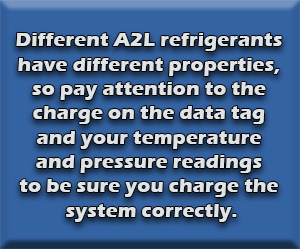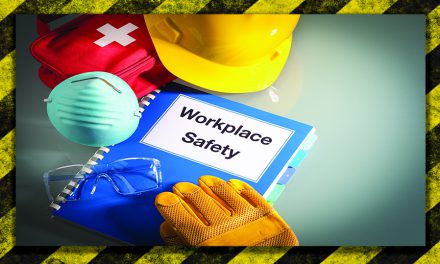As high-performance professionals, you always want to check for correct system operation. When it comes to charging systems, you always want to verify proper airflow on the return or supply side of the system. Superheat is still superheat; subcooling is still subcooling.
Every piece of A2L-charged equipment has a label highlighting the refrigerant’s flammability so that consumers will know this immediately. If they have concerns, it might make sense to point out that any automobile manufactured and sold in the U.S. today uses A2L refrigerant for the air conditioning system, which is installed next to a combustion engine.
These slightly flammable refrigerants are already here. And not just in cars. A2Ls are in some residential kitchen refrigerators, so they are already in people’s homes.
The stigma or fear of causing damage or harm is no different for HVAC equipment than for an appliance service professional who works on your refrigerator that uses propane. It’s no different than the mechanic who works on your vehicle equipped with A2L-based air conditioners.
The liability aspect is very low if you follow OSHA regulations when doing installations. It’s very low if you follow the manufacturer-recommended guidelines. Do those things, and you limit your liability.
Differences Between R-410a and R-32

Before we talk about the differences between R-410A and the A2Ls that are slated to replace it, we need to establish that not all A2Ls are the same. Even though the A2Ls are all similar from a flammability standpoint, they’re made up of different chemicals.
A2L R-32, is a non-blend refrigerant. R-410a, on the other hand, is a 50-50 blend of R-125 and R-32. In a way, technicians have already been using R-32 since the adoption of R-410a as the standard.
Other refrigerants, like R-454B, are HFO blends. R-454B is what we call a “low-glide” blend, just like R-410A. Like R-410A, you will need to charge blends like R-454B in the liquid state.
When charging A2L-based equipment with R-32, one of the significant differences will be using different enthalpy and saturation charts than those used for R-410a. But in essence, you’ll be looking for the same numbers.
Other A2Ls, like R-454B, also have pretty similar discharge pressures to R-410A despite having different charts. Still, you’ll want to make sure you’re using the right charts and resources for the refrigerant you’re working with. Don’t rely on an R-410A or R-454B chart for an R-32 system because there are differences.
Another difference is due to the chemical properties where A2L-based mini-split systems will use much less R-32 than their R-410a counterparts.
For example, in an R-410a-based system, the full refrigerant charge may be four pounds, while an R-32-based system, designed to deliver the same capacity, will only use around 2.8 pounds. In other words, A2L-based systems require less refrigerant.
Furthermore, R-32 performs better than R-410a in low ambient conditions, providing better heat pump performance with greater capacity in low ambient temperatures.
Click Below for the Next Page













Recent Comments